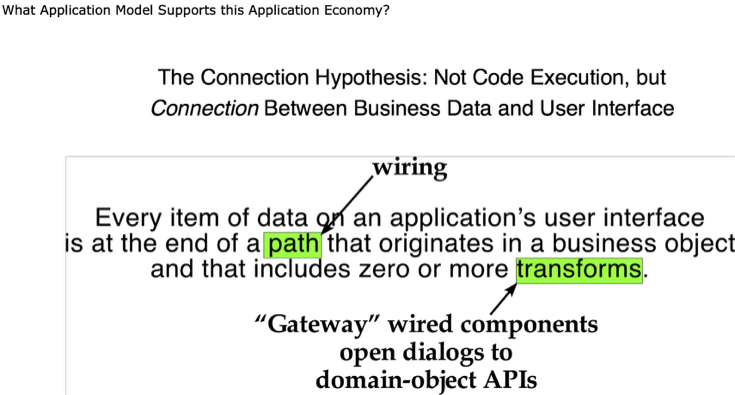First, we need a program model that cleanly partitions the application into a producer (professional) side and a consumer (amateur) side and gives consumers a big part of the action. The model is based on this “Connection Hypothesis”, which is a contemporary expression of the following old idea.
If you look at the screen of a 1970s-era mainframe business application using IBM 3270 displays you will see a structured layout of alphanumeric data specific to the application’s current use case. The operator can step through the data and change certain fields. When the operator commits the changes they are reflected back into the state of the application. Many of today’s applications are still based on this model.
Read the “Connection Hypothesis” statement on this slide carefully. It abstracts that idea, and is the basis of the two-sided application model, shown in the next slide. In this two-sided application model, the connections are built by consumers as wiring diagrams, without any coding. This is the basis of the substantial and code-free consumer side of the application.
Video demonstrating the interactive wiring tool
